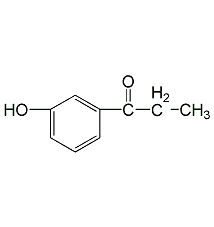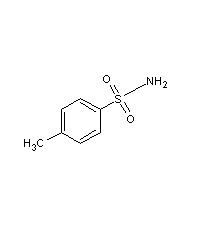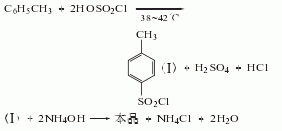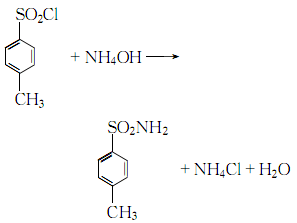
Structural formula
| Business number | 01GB |
|---|---|
| Molecular formula | C9H10INO3 |
| Molecular weight | 307.09 |
| label |
3-iodo-L-phenylaminopropionic acid, 3-Monoiodo-L-tyrosine, IC6H3-4-(OH)CH2CH(NH2)CO2H |
Numbering system
CAS number:70-78-0
MDL number:MFCD00002608
EINECS number:200-744-8
RTECS number:None
BRN number:2941266
PubChem ID:None
Physical property data
1. Properties: white crystal. It is unstable to light and releases iodine. Sensitive to air.
2. Density (g/mL, 25/4?): Undetermined
3. Relative vapor density (g/mL, air=1): Undetermined
4. Melting point (ºC): 204~206? (decomposition)
5. Boiling point (ºC, normal pressure): Undetermined
6. Boiling point (ºC, normal pressure) 5.2kPa): Not determined
7. Refractive index: Not determined
8. Flash point (ºC): Not determined
9. Specific rotation ( º): [?]D20 -4.4° (C=5, in 1mol/L hydrochloric acid)
10. Autoignition point or ignition temperature (ºC): Undetermined
11 . Vapor pressure (kPa, 25ºC): Undetermined
12. Saturation vapor pressure (kPa, 60ºC): Undetermined
13. Heat of combustion (KJ/mol): Undetermined
14. Critical temperature (ºC): Undetermined
15. Critical pressure (KPa): Undetermined
16. Oil and water (octanol/water) Log value of distribution coefficient: Undetermined
17. Explosion upper limit (%, V/V): Undetermined
18. Explosion lower limit (%, V/V): Undetermined
19. Solubility: soluble in 15 parts of boiling water, soluble in dilute alkali, slightly soluble in water.
Toxicological data
None
Ecological data
None
Molecular structure data
1. Molar refractive index: 60.28
2. Molar volume (cm3/mol): 157.9
3. Isotonic specific volume (90.2K ): 462.4
4. Surface tension (dyne/cm): 73.5
5. Polarizability (10-24cm3): 23.89
Compute chemical data
1. Hydrophobic parameter calculation reference value (XlogP): -1.1
2. Number of hydrogen bond donors: 3
3. Number of hydrogen bond acceptors: 4
p>
4. Number of rotatable chemical bonds: 3
5. Number of tautomers: 3
6. Topological molecular polar surface area (TPSA): 83.6
7.Number of heavy atoms: 14
8, Surface charge: 0
9, Complexity: 212
10, Number of isotope atoms: 0
11. Determine the number of atomic stereocenters: 1
12. Uncertain number of atomic stereocenters: 0
13. Determine the number of chemical bond stereocenters: 0
14. The number of uncertain stereocenters of chemical bonds: 0
15. The number of covalent bonding units: 1
Properties and stability
None
Storage method
This product should be sealed and stored in a dry place below 0? and protected from light.
Synthesis method
None
Purpose
Used in biochemical research as an inhibitor of tyrosine hydroxylase. ????
extended-reading:https://www.bdmaee.net/wp-content/uploads/2022/08/Lupragen-DMI-gel-catalyst-Lupragen-DMI-epoxy-resin-curing-agent-Lupragen-DMI.pdfextended-reading:https://www.bdmaee.net/dabco-mp602-catalyst-cas31506-44-2-evonik-germany/extended-reading:https://www.newtopchem.com/archives/category/products/page/22extended-reading:https://www.bdmaee.net/cas-2273-45-2/extended-reading:https://www.bdmaee.net/wp-content/uploads/2022/08/-BX405-low-odor-amine-catalyst-BX405–BX405-polyurethane-catalyst.pdfextended-reading:https://www.bdmaee.net/wp-content/uploads/2022/08/40.jpgextended-reading:https://www.newtopchem.com/archives/45168extended-reading:https://www.newtopchem.com/archives/39763extended-reading:https://www.newtopchem.com/archives/44356extended-reading:https://www.bdmaee.net/wp-content/uploads/2022/08/Tetramethylpropanediamine-CAS110-95-2-TMPDA.pdf



 Process flow: first put an appropriate amount of ice water into the amination pot, and then mix it according to the mass Ratio (p-toluenesulfonyl chloride: pure ammonia = 1:0.2). Put the measured p-toluenesulfonyl chloride and ammonia water into the pot in sequence, start the stirrer, and use the cold liquid in the amination pot jacket to control the temperature in the pot to about 70°C. (This reaction generates a lot of heat), then lower the temperature to about 30°C and discharge the material. Put the amination into a filter bucket and filter, wash with warm water, and blot dry to obtain solid powdery crude p-toluenesulfonamide. Crude p-toluenesulfonamide contains a small amount of o-toluene sulfonamide by-product, oily colored substance. The purpose of purification and refining can be achieved by utilizing the property of para-amine to be easily soluble in sodium hydroxide solution and using activated carbon for decolorization. The material mass ratio is crude para-amine: 30% sodium hydroxide, liquid alkali: water = 100: 45: 1300; crude para-amine: activated carbon = 100: (2.5-3.5). Put the water and caustic soda into the purification pot according to the formula amount, open the jacketed steam valve and heat it to 70°C, then add the formula amount of crude para-amine, start the rear stirrer, and wait until the crude para-amine is completely dissolved. Add the formula amount of activated carbon, continue stirring for 0.5h, put the material liquid into the filter barrel, filter it with heat, wash it with hot water, and suck it dry. The filtrate is immediately poured into the refining pot, neutralized with hydrochloric acid to PH value = 2-3, and cooled to about 30-35°C. The material liquid is put into a filter barrel to filter, then washed with water until neutral, moved to a centrifuge and centrifuged to dry, that is It is a finished product containing 10% water. If a dry product is required, it is sent to an air flow dryer for drying to obtain a finished p-toluenesulfonamide product containing 1% water.
Process flow: first put an appropriate amount of ice water into the amination pot, and then mix it according to the mass Ratio (p-toluenesulfonyl chloride: pure ammonia = 1:0.2). Put the measured p-toluenesulfonyl chloride and ammonia water into the pot in sequence, start the stirrer, and use the cold liquid in the amination pot jacket to control the temperature in the pot to about 70°C. (This reaction generates a lot of heat), then lower the temperature to about 30°C and discharge the material. Put the amination into a filter bucket and filter, wash with warm water, and blot dry to obtain solid powdery crude p-toluenesulfonamide. Crude p-toluenesulfonamide contains a small amount of o-toluene sulfonamide by-product, oily colored substance. The purpose of purification and refining can be achieved by utilizing the property of para-amine to be easily soluble in sodium hydroxide solution and using activated carbon for decolorization. The material mass ratio is crude para-amine: 30% sodium hydroxide, liquid alkali: water = 100: 45: 1300; crude para-amine: activated carbon = 100: (2.5-3.5). Put the water and caustic soda into the purification pot according to the formula amount, open the jacketed steam valve and heat it to 70°C, then add the formula amount of crude para-amine, start the rear stirrer, and wait until the crude para-amine is completely dissolved. Add the formula amount of activated carbon, continue stirring for 0.5h, put the material liquid into the filter barrel, filter it with heat, wash it with hot water, and suck it dry. The filtrate is immediately poured into the refining pot, neutralized with hydrochloric acid to PH value = 2-3, and cooled to about 30-35°C. The material liquid is put into a filter barrel to filter, then washed with water until neutral, moved to a centrifuge and centrifuged to dry, that is It is a finished product containing 10% water. If a dry product is required, it is sent to an air flow dryer for drying to obtain a finished p-toluenesulfonamide product containing 1% water.  2.
2.
